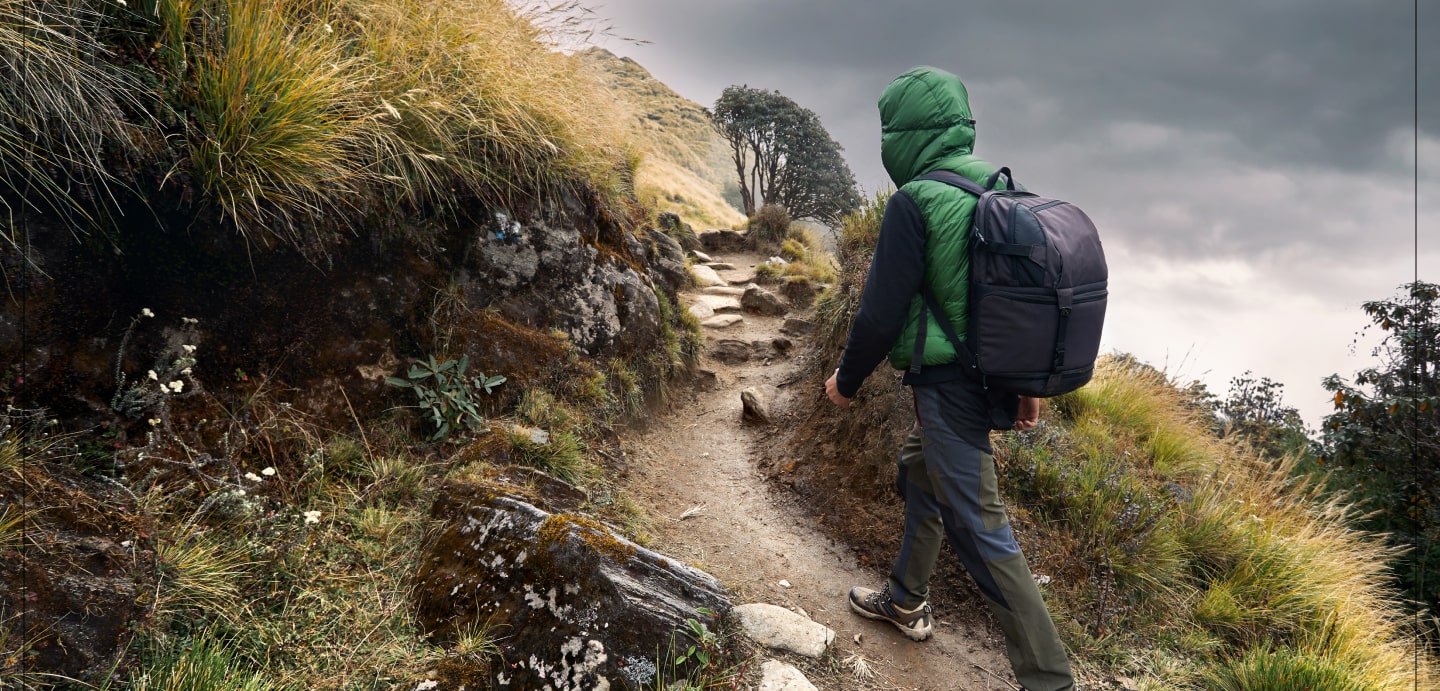From Snowdonia to Pembrokeshire and the Brecon Beacons, Wales is home to a wealth of beautiful landscapes and countryside criss-crossed by trails ideal for adventurous walking or hiking trips. Whether you want to summit the highest peak in Wales, enjoy a scenic coastal walk, or retreat to the calm of ancient woodlands, you can find what you’re looking for in the national parks and verdant expanses of Wales. However, the country also has plenty of unpredictable and wild weather to watch out for, particularly during the fall and winter months.
However, potentially extreme weather conditions shouldn’t prevent you from scheduling a trip when the weather gets a little cooler. With the proper planning, organization, and common sense, you can be fully prepared for any inclement weather, no matter the season. And you can enjoy whatever activities you have planned — be it hiking, backpacking, mountaineering, or mountain biking — with the right gear in tow.
No matter what kind of outdoor adventure you’re planning for your trip to Wales, you won’t want to forget your travel insurance. Even the most meticulously planned trips can go sideways, and you’ll want to make sure you’re safe and sound. A battleface travel plan provides peace of mind for every trip, thanks to travel medical insurance and medical evacuation, baggage loss and delay, trip interruption and trip delay coverage.

Hiking and walking in Wales
Heading out on a hike or long walk in Wales requires some forward planning. First, you’ll want to make sure you choose a route that is suitable for the fitness level of you and your group. Don’t be overly ambitious, especially if you’re inexperienced and unfamiliar with the terrain. Take note of the estimated time it will take to complete your route, and make sure you set out early enough that you’ll be able to comfortably finish before nightfall.
You’ll also want to keep a close eye on the weather conditions as the day of your walk or hike approaches. Check for any weather warnings on a local radio station the morning of your hike, and if there are any severe storms or extreme weather events forecast — such as flood warnings, strong winds, or thunderstorms — you may want to reconsider. If local authorities advise that people should stay indoors or seek shelter, then you should definitely not head out.
Also keep in mind that conditions can change very quickly on the ground. While you may wake up to sun and clear skies, you can easily find yourself in the midst of heavy rainfall or snow just a matter of hours later. The best advice is to not assume the best — prepare for the worst.
That said, forecast rain or snow does not have to deter you or mean you should cancel your plans. Just make sure you’re adequately prepared with the right gear, clothes, and emergency kit. Read on to find out what to pack for wild weather in Wales.

What to pack for hiking in Wales
When it comes to packing for severe weather, the best advice is to wear plenty of layers. While you may be tempted to wear your heaviest and warmest coat, wearing several lighter layers is actually a better way of keeping warm air circulating and protecting against strong winds and rain.
Always keep your extremities warm, with a hat, gloves, thick walking socks, and waterproof hiking shoes or boots. Thermal, lightweight base layers are a great idea to wear close to your body, with several mid layers on top. If you encounter a severe storm or heavy rain and get completely soaked, you’ll be glad if you pack some additional clothes in your pack to change into. But at the very least, bring an extra pair of socks because nothing is more miserable than hiking with wet feet.
Perhaps the most important part of your gear is your waterproof outerwear. In addition to a waterproof jacket, you may also need waterproof trousers to wear over your pants in case you encounter heavy rainfall. A waterproof cover for your backpack will keep your supplies dry, and you should carry any valuables or electronic items inside a waterproof container.
You’ll also want to pack snacks and plenty of water. It’s best to overestimate how much you might need to eat or drink on your hike in case you end up staying out longer than you anticipated. And remember, just because it may be cold, it doesn’t mean you don’t need to drink plenty of fluids. Taking a flask of hot tea can be a great way to warm up and stay hydrated at the same time.

Navigating your route
According to local authorities, the most common reason for emergency services call outs from hikers and walkers in Wales is people becoming lost. Too many hikers assume that they can simply navigate using their phone’s GPS, or use trail markings to find their way. But phone batteries die, signals can be poor or non-existent, and things don’t always happen as anticipated.
So in addition to packing your fully charged phone and a portable charger, make sure you also take a map that is recommended by local tourist services. Even if you don’t plan to be out after nightfall, it’s wise to also pack headlamps with spare batteries, alongside your emergency kit. A first aid kit is also essential, and make absolutely sure you have the contact numbers for local emergency services before you set off
